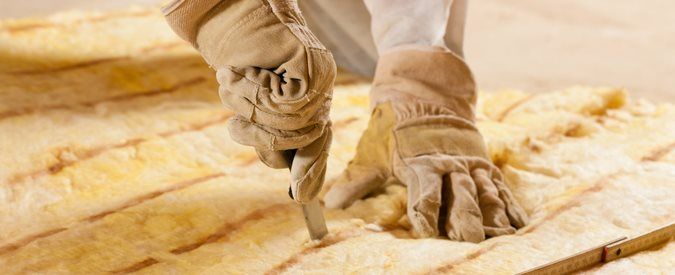Last Updated: February 14, 2023
Compare Pros and Cons of Insulating Your Basement Walls
Try Our Free Insulation Cost Calculator
Fill out our 30 second free form to receive competitive pricing from pre-screened insulation companies. No commitments. Our service is always free!
The basement is one of the last places homeowners think to insulate, but it can account for a large portion of home heat loss, particularly in cold climates. If the basement is used as a living space, insulation keeps it dry and comfortable.
Insulating the basement is a smart financial decision for some homeowners and a waste of money for others. The decision typically comes down to climate and condition of your home - more on these topics in a bit.
If insulating does make sense, there are three places where insulation can go: interior walls, exterior walls and the ceiling. The best placement for you depends on how the basement is used and whether you’re building a new house or adding insulation to an existing one. Sometimes, a combination approach works best.
Climate and Energy Savings
Most experts agree that insulating your basement makes sense if you live in a Climate Zone 3 or anywhere colder. (Click here for a map of climate zones.) Generally, the colder your climate, the greater energy savings you will realize.
In addition to climate, energy savings vary based on the type of insulation you use, its energy efficiency rating (R-value), where it is placed, whether it is properly installed and the overall efficiency of your home.
The U.S. Department of Energy estimates annual savings of about $250 to $450 for insulating basement walls. In Buffalo, N.Y., a homeowner might save $350 per year with R-10 insulation and $390 with R-20. In St. Louis, Mo., the savings would be closer to $250 and $290. However, these are just averages. Actual energy savings could be much higher or lower.

Try Our Free Insulation Cost Calculator
Fill out our 30 second free form to receive competitive pricing from pre-screened insulation companies. No commitments. Our service is always free!
The Condition of Your Home
Scratch everything we’ve just said if your home is otherwise drafty or energy inefficient. Insulating the basement is a great way to save on energy bills IF the rest of your house is relatively tight and efficient. If you have drafty doors or windows, for example, take care of those first. The basement is typically the last place you insulate.
Pros and Cons of Exterior Wall Insulation
Insulating exterior basement walls only makes sense with new construction. With an existing home, the process is disruptive and cost prohibitive.
Insulating exterior walls keeps your foundation warm and dry, reducing condensation, mold and mildew. It protects the foundation from the damaging effects of very cold climates (in some regions, building codes may require some kind of thermal boundary around the basement). It provides some moisture protection and makes the basement warmer and more comfortable. Unlike interior insulation, exterior insulation will not reduce the overall size of the basement.
On the downside, insulating exterior basement walls can be expensive - more so than insulating interior walls or the ceiling. If you opt for foam insulation that has not been treated with insect repellant, your house will have an increased risk of termite infestation. And if your soil contains radon gas, a mitigation system is a must when exterior walls are insulated.
As a side note - it’s worth pointing out that basement wall insulation is a pretty controversial topic. Some experts highly recommend it, while others will tell you it is not cost effective. If it’s something you’re considering, get a variety of opinions first so you can make an informed decision.
Pros and Cons of Interior Wall Insulation
Insulating interior basement walls is much easier and far less expensive. Almost any type of insulation can be used without the risk of insect infestation. Insulating interior walls also keeps the space warmer than exterior insulation. If you’re using the basement as a living space, interior insulation is a good idea.
However, insulating interior walls does not protect your foundation, and it cuts into the basement’s usable space. If the drainage around your home is poor, the insulation could become moist, leading to problems with mold or mildew.
Pros and Cons of Basement Ceiling Insulation
Insulating the basement ceiling is the least expensive option, although it is generally not recommended. Most people who do it are looking to prevent cold air from an unused basement from reaching the rest of the house. However, the installation process is tricky because you have to maneuver around so many wires and pipes, and many experts believe the benefits are too small to justify the cost and hassle.
That being said, sometimes it’s a good idea to insulate only the perimeter of the basement ceiling when you’re insulating interior walls.
Find the Best Insulation Pros Who Will Compete for Your Business
Try Our Free Insulation Cost Calculator
Fill out our 30 second free form to receive competitive pricing from pre-screened insulation companies. No commitments. Our service is always free!
Try Our Free Insulation Cost Calculator
Fill out our 30 second free form to receive competitive pricing from pre-screened insulation companies. No commitments. Our service is always free!